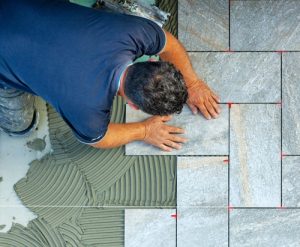Painting moulded bathroom walls can breathe new life into your space while providing essential moisture protection. Follow this comprehensive guide to achieve a beautiful, durable finish in your bathroom.
Why Paint Your Bathroom Walls?
Before we begin, let’s highlight the benefits of painting:
- Aesthetic Enhancement: A fresh coat of paint can transform the look and feel of your bathroom, creating a more inviting atmosphere.
- Moisture Resistance: Special bathroom paints protect against humidity and mould growth, ensuring your walls remain in great condition.
- Cost-Effective Refresh: Painting is an affordable way to update your bathroom without the need for extensive renovations.
- Personalization: Choose colours that reflect your style and make the space uniquely yours.
Step-by-Step Guide
Step 1: Check for Mould
Before Maroubra painting, inspect your walls for any mould.
- Identify and Address the Source: Look for dark spots or musty smells, which indicate mould presence. Understanding the cause (like poor ventilation) can help you prevent future issues.
- Safety First: Wear gloves and a mask when handling mould, and ensure good ventilation in the area.
Step 2: Clean the Walls
Thorough cleaning is essential for paint adhesion.
- Make a Cleaning Solution: Combine 1 part bleach with 3 parts water, or use a commercial mould remover.
- Scrub the Affected Areas: Apply the solution with a sponge or brush, letting it sit for 10-15 minutes to kill mould spores.
- Rinse and Dry: Rinse the walls with clean water and dry them completely with a towel.
Step 3: Use an Anti-Mould Primer
Applying an anti-mould primer will help prevent future growth.
- Select the Right Primer: Choose a mould-resistant primer designed for bathrooms.
- Apply Evenly: Use a brush or roller to cover the walls, especially in moulded sections, and allow it to dry according to the manufacturer’s instructions.
Step 4: Repair Any Damage
Inspect the walls for imperfections.
- Fill Holes and Cracks: Use a high-quality filler to repair any damage, smoothing it with a putty knife.
- Sand Smooth: Once dry, sand the filled areas with fine-grit sandpaper for a seamless finish.
- Dust Removal: Wipe the walls with a damp cloth to remove any dust from sanding.
Step 5: Choose Your Paint Wisely
Selecting the right paint is critical.
- Opt for Moisture-Resistant Paint: Look for paint specifically formulated for high-humidity areas.
- Select the Finish: Satin or semi-gloss finishes are best for bathrooms, as they offer durability and easy cleaning.
- Pick Your Color: Choose a color that complements your bathroom décor, considering how light shades can make a space feel larger.
Step 6: Prepare for Painting
Preparation sets you up for success.
- Protect Surrounding Areas: Use painter’s tape to mask off areas you don’t want to paint, and lay down drop cloths to catch any drips.
- Gather Your Tools: Ensure you have brushes, rollers, a paint tray, and stir sticks ready.
Step 7: Start Painting
Now it’s time to paint!
- Apply the First Coat: Start by cutting in around the edges with a brush, then use a roller for larger areas. Ensure even coverage.
- Follow Drying Instructions: Allow the first coat to dry according to the manufacturer’s guidelines before applying a second coat.
- Apply the Second Coat: Once the first coat is dry, apply a second coat for a richer finish.
Step 8: Allow to Cure
Curing is essential for a long-lasting finish.
- Follow Curing Times: Check the paint can for recommended curing times, and avoid using the bathroom for at least 24 hours post-painting.
- Ensure Ventilation: Keep the area well-ventilated during the curing process to help the paint set properly.
Step 9: Regular Maintenance
To keep your bathroom walls looking fresh, establish a maintenance routine.
- Regular Cleaning: Wipe down the walls with a damp cloth to remove dust and moisture.
- Monitor for Mould: Periodically check for signs of mould and address any issues immediately.
- Control Humidity: Use exhaust fans while showering to reduce moisture levels and prevent mould growth.
Additional Tips for Success
- Choose the Right Weather: Aim for a low-humidity day to paint for the best results.
- Consider Using a Sprayer: For larger areas or a more uniform finish, a paint sprayer can be effective, but practice beforehand.
- Maintain a Wet Edge: Work in small sections to keep a wet edge, preventing visible lines and ensuring a smooth finish.
Conclusion
Sydney House Painting moulded bathroom walls is a rewarding project that can enhance the look and durability of your space. By following these steps and taking the necessary precautions, you can achieve a beautiful, long-lasting finish. Enjoy your newly refreshed bathroom!




















+ There are no comments
Add yours